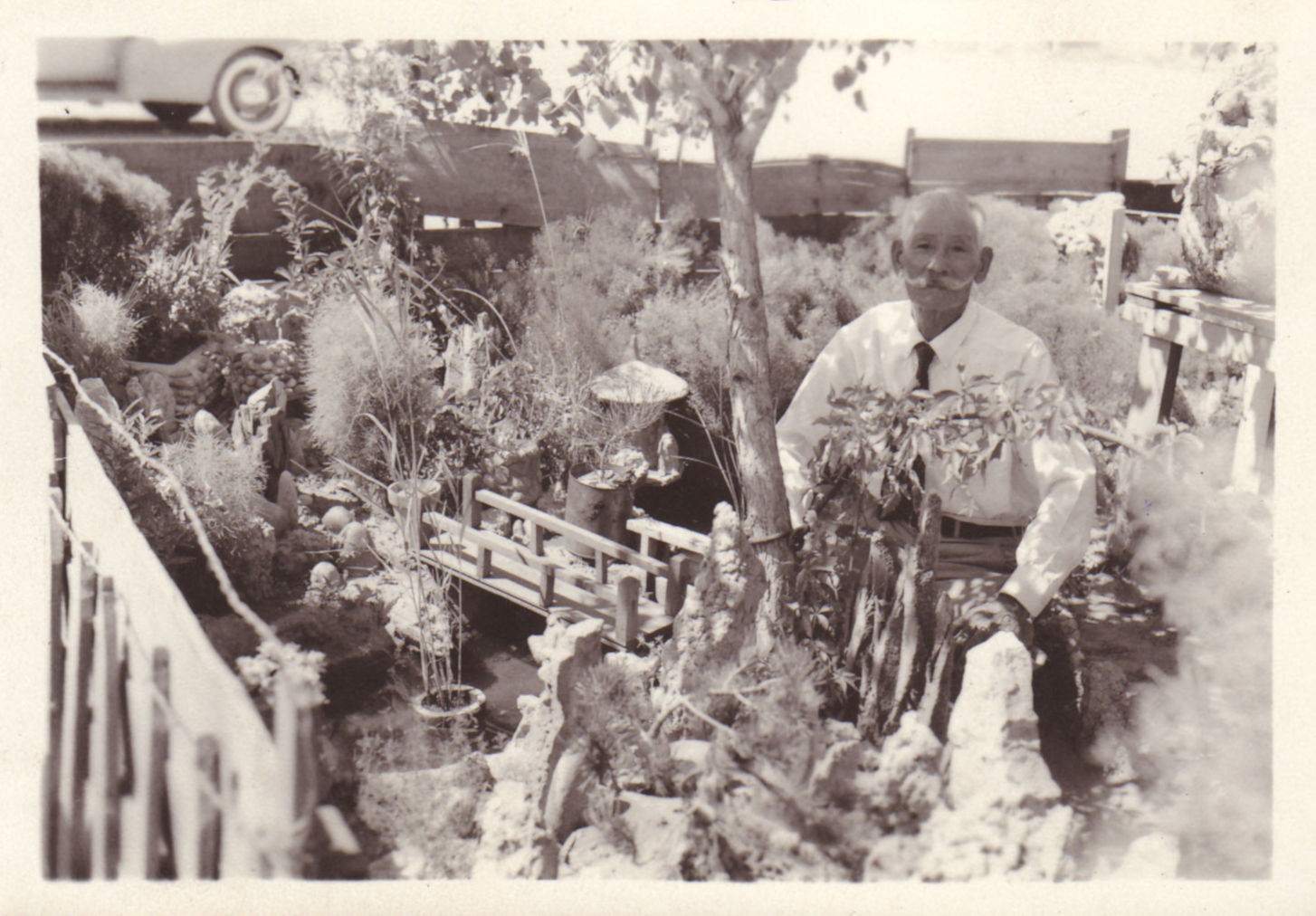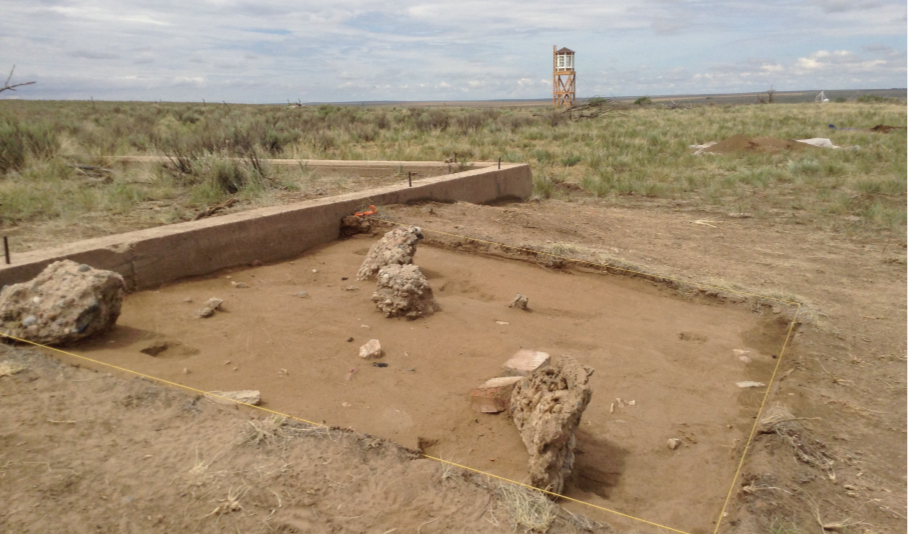Leading up to WWII, in an attempt to broadcast loyalty to the United States and avoid hostile associations with Imperial Japan, many Japanese cultural practices and objects were abandoned or destroyed. Yet, many treasured possessions were brought to Amache, where Japanese traditions were still practiced, as documented in historic photos, oral histories, and the archaeological record. After the war, continued pressure to conform to mainstream American culture resulted in the widespread loss of connection to many of these aspects of Japanese heritage, which has had lasting effects on generations of Japanese Americans. Read more in Wrestling with Tradition: Japanese Activities at Amache, by Zachary Starke.

Many gardens in Amache featured traditional Japanese elements. They appear in barrack entryway gardens, such as this one created by Mataji Umeda in Block 7G. There are also larger gardens in common spaces that included features such as koi ponds.
In 2014, this karesansui garden, or dry-landscape zen garden, was found in Block 12H. Learn more about this and other gardens in a presentation on Amache gardens prepared for TADAIMA! A Community Virtual Pilgrimage. The archaeology of Amache gardens will be featured in a new book by Dr. Bonnie Clark this fall.


Communal showers at Amache had little privacy and did not include bathtubs. Ofuros, or Japanese soaking tubs, were commonly used before and after the war by families at Amache from the Yamato farming colonies in California’s Central Valley (Livingston, Cressey, and Cortez). While there is little historical evidence of ofuros at Amache, foundations of likely ofuros were found in Blocks 7H and 6G in 2014. The photo above shows the excavation in Block 7H. A bundle of toiletries was found in association with the ofuro. This is the first known excavation of an ofuro in an incarceration facility, and Zack Starke’s Master’s Thesis is the first anthropological investigation of historical ofuro use in the United States. Amache incarceree Carlene Tinker shared her memories of soaking in an ofuro at Amache with her family in an interview with High Plains Public Radio.

In addition to typical American sports, the WRA recreation department at Amache provided funding and reporting coverage for Japanese sports, including judo and sumo. At least two sumo rings were built at Amache where a number of tournaments were held. While sumo was more popular with the Issei, there was also a boys’ sumo wrestling group.
In 2014, the DU Amache Archaeology Field School confirmed the location of the 9F sumo ring. Historic photos and oral histories led them to the sumo platform area which is still evident today as a flat, square-shaped terrace.


Mochi tsuki is the pounding of rice to make mochi, a rice cake made with sweet sticky rice. It is an important traditional New Year’s event and is so culturally significant that instead of a man in the moon, Japanese see a rabbit pounding mochi. A special type of sticky rice is soaked in water overnight, steamed, and placed in an usu, a large bowl made of wood, stone, or concrete. The rice is pounded with a heavy wooden mallet, called a kine, while another person turns the rice on each of the mallet’s upswings. A number of usus are still evident at Amache. In 2018, Amache survivor Minoru Imamura posed with the usu in Block, 9H.